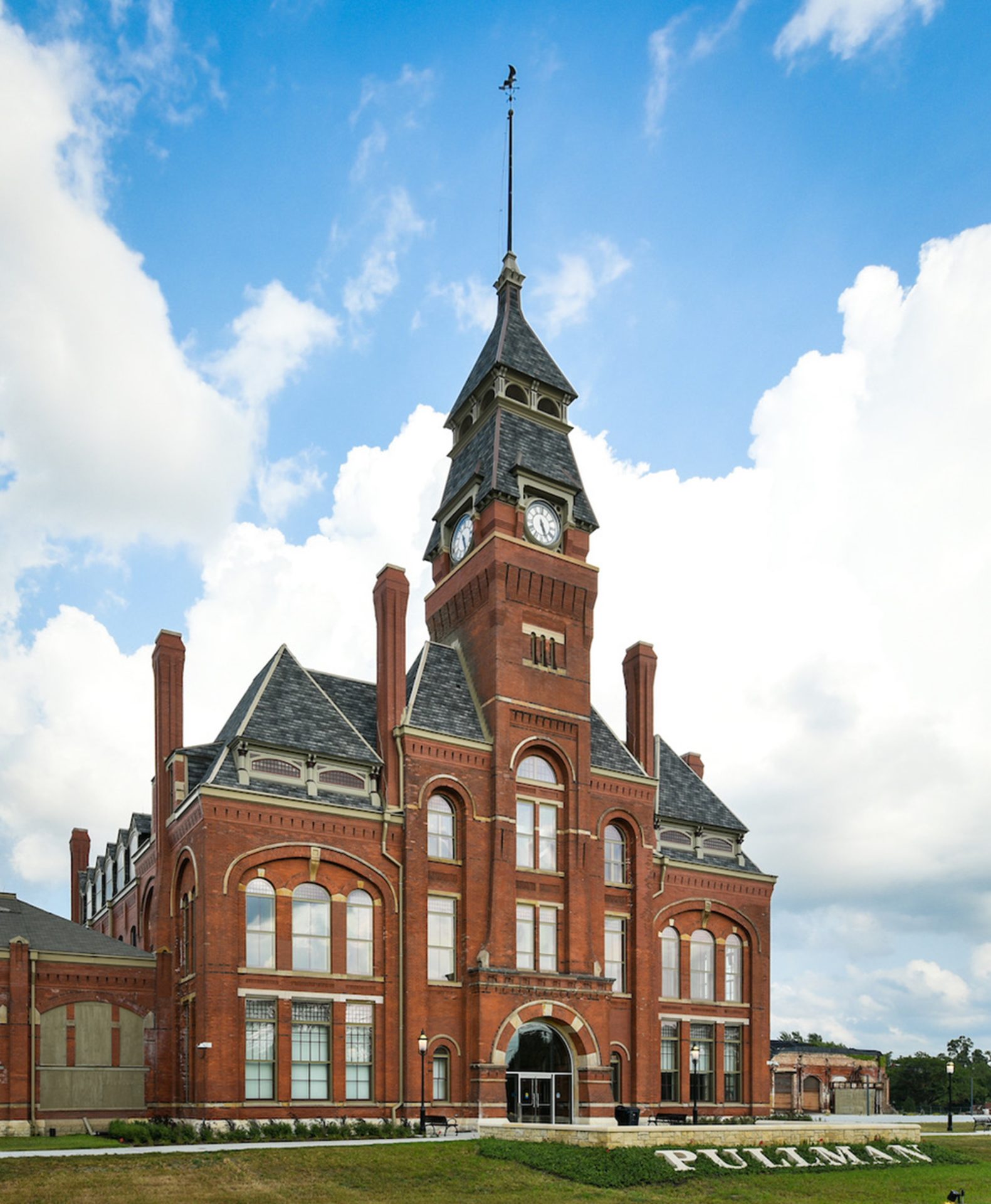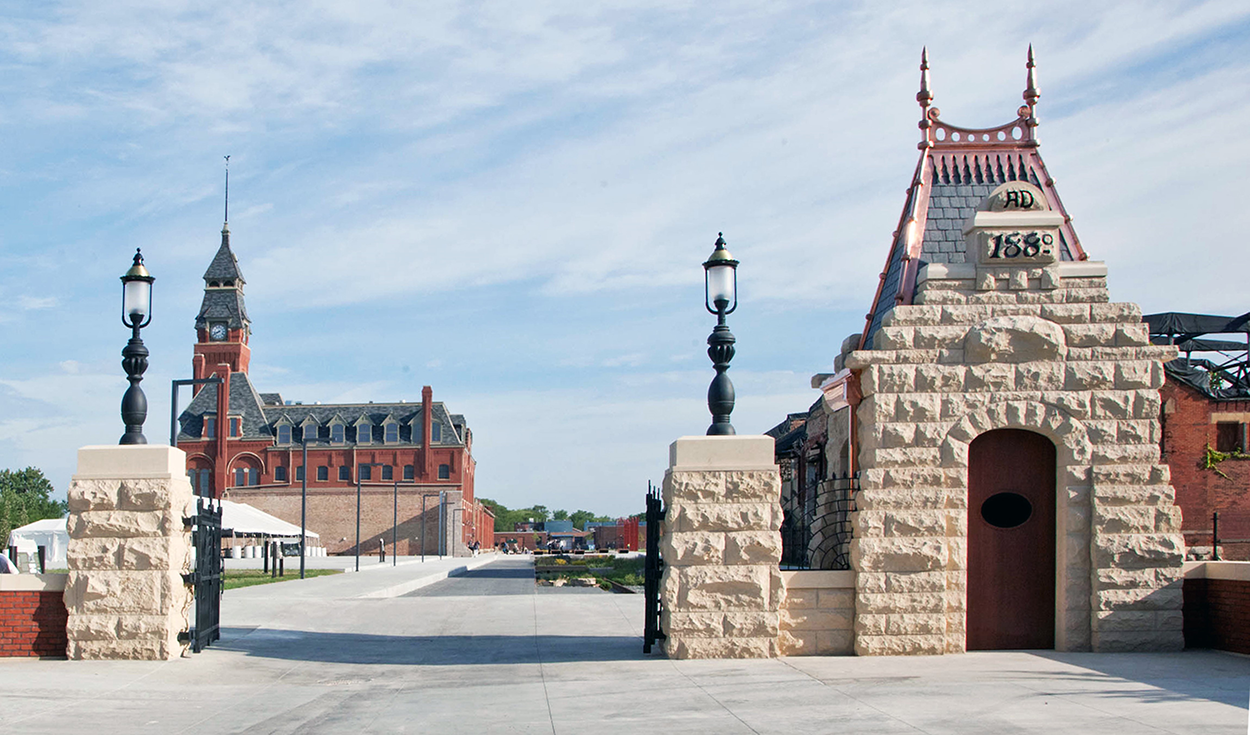2022 Landmarks Illinois Richard H. Driehaus Foundation Preservation Award for Rehabilitation
The National Park Service, Illinois Department of Natural Resources, Chicago Neighborhood Initiatives, National Park Foundation, Positioning Pullman Project Team and Historic Pullman Foundation are being honored for their collective decades of community advocacy and commitment to preserving the historic factory town of Pullman on Chicago’s South Side. A $35 million renovation transformed the long-abandoned Pullman Administration Clock Tower Building and surrounding 12-acre factory grounds into the new visitor center and landscape for Pullman National Monument and State Historic Site. The project demonstrates the commitment of its community partners to complement the preservation of history with economic growth and opportunity.
The former Pullman Company Administration Clock Tower Building and Factory Grounds were completed in 1880 and designed by Chicago architect Solon Beman. The factory complex and the surrounding Town of Pullman have a complicated history. Built by industrialist George Pullman to house operations and workers for his Pullman Palace Car Company, the project was one of the first applications of industrial technology and mass production in the construction of a large-scale integrated manufacturing/residential complex, was home to the scene of the 1894 Pullman Strike and is the first successful negotiation of a bargaining unit agreement between a Black union (the Brotherhood of Sleeping Car Porters) and a major U.S. corporation (the Pullman Company).
The Administration Clock Tower Building and Factory Grounds were purchased by the State of Illinois and made a State Historic Site in 1991. After near destruction in a fire in 1998, the State of Illinois completed a $3.4 million stabilization in 2005, preserving the building to await a more viable reuse. President Barack Obama designated Pullman a National Monument in 2015, breathing new life into efforts to rehabilitate the Administration Clock Tower Building. The site is on pace to exceed the anticipated 300,000 visitors annually and is introducing visitors to the community’s rich history and other amenities.
(Photo credit: Pullman National Monument)




